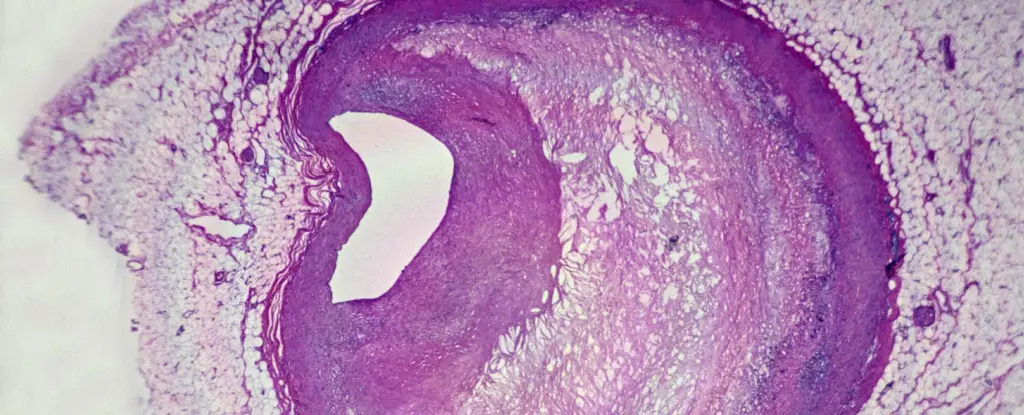Microplastics have become a subject of intense scrutiny and concern in recent years, invading not only our oceans and ecosystems but also becoming an increasingly prevalent topic in medical research. Researchers are uncovering alarming evidence that suggests these infinitesimal plastic particles are lurking within our bodies, potentially impacting our health in ways previously unimagined. A recent study presented by Dr. Ross Clark, a vascular surgeon at the University of New Mexico, sheds light on the significant correlation between microplastics in the arterial plaque and increased risks of severe cardiovascular events. This emergent field of research raises urgent questions about the long-term ramifications of microplastics in the human vascular system, which could have major implications for public health.
The Connection Between Microplastics and Cardiovascular Health
The findings from Dr. Clark’s research presented at a recent American Heart Association conference highlight a shocking statistical disparity in the concentration of microplastics found in diseased arteries as compared to healthy ones. In individuals suffering from symptoms such as strokes or mini-strokes, plaque was observed to contain a staggering 51 times more microplastics than in those with symptom-free arteries. This notable increase calls into question the role microplastics might play in the pathological processes underlying cardiovascular diseases. While causation is yet to be established, the correlation suggests that with further exploration, microplastics could be linked to detrimental changes within the vascular system.
In Dr. Clark’s study, he examined samples from a cohort of 48 people, measuring the microplastics found specifically in the carotid arteries, the main blood vessels supplying the brain. The revelations from the study do not merely lie in the alarming quantities of microplastics but also in the genetic repercussions associated with their presence. Clark found differences in gene activity in immune cells within plaques that contained high levels of these particles, which may result in pro-inflammatory conditions that further increase cardiovascular risk.
The Urgent Need for More Research
Despite these initial findings, the research remains in its nascent stages, with Dr. Clark himself recognizing the need for peer review and replication of results before any robust conclusions can be drawn. It’s crucial to underscore that while the presence of microplastics in human arteries has been noted, the exact mechanisms driving such associations are still largely elusive. Scientists like Jaime Ross, a neuroscientist who reviewed the study, emphasize it is essential to unravel the potential biological activities of microplastics in the body, as their impact might shift the paradigm of cardiovascular health narratives.
With the research still in its infancy, the methodologies employed to identify these microplastics must be closely examined. For instance, the process of heating arterial plaque to high temperatures to vaporize polymers could introduce complexities due to overlapping chemical structures that mimic plastics. Nonetheless, Dr. Clark and his team have taken significant steps to minimize errors in their measurements, but as research evolves, more nuanced and accurate techniques will be paramount.
Broader Implications Beyond the Vascular System
The concern surrounding microplastics goes beyond just cardiovascular health. Their presence in organs, such as the lungs and liver, along with reported findings of microplastics in the human brain, hints at systemic invasions that could cause a plethora of health issues. As other studies explore the impact of microplastics across various organ systems, the cumulative knowledge could shape public health policies and preventive strategies aimed at mitigating exposure to these pollutants.
Clark’s ongoing efforts to secure funding for further studies might pave the way for a greater understanding of how microplastics interact with immune cells and contribute to inflammatory diseases. With advancements in animal experimentation, researchers might reveal a clearer picture of the causative relationships at play and the biological pathways affected by microplastics, ultimately guiding therapeutic interventions.
Public Responsibility in a Plastic World
As the scientific community delves deeper into the relationship between microplastics and human health, a pressing ethical dilemma emerges: how to balance the undeniable convenience of plastic use against its possibly dire health consequences. The responsibility lies with both individuals and policymakers to advocate for sustainable practices that reduce plastic consumption and environmental pollution. As consumers become more educated about the implications of microplastics, they may demand change from manufacturers and governments, urging the move towards bio-friendly materials and stringent regulations that restrict plastic usage.
Public awareness of microplastics is crucial in this dialogue. Understanding their presence in everyday life—from food packaging to synthetic clothing—can empower individuals to make informed choices and contribute to a larger social movement aiming for systemic change. As we delve into this challenging but necessary discourse, we must confront the possibility that our reliance on plastics could be jeopardizing not only our own health but also that of future generations.


Leave a Reply